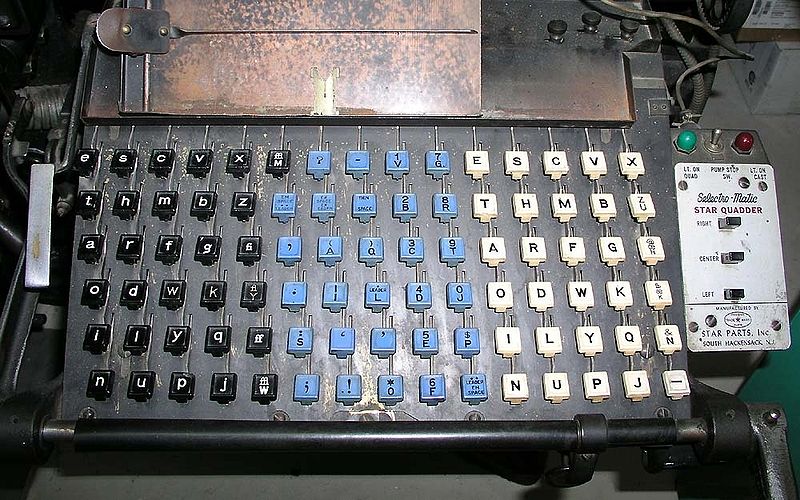Reverse-engineering the book
By:
November 7, 2009

As a child, John Carrera was fascinated by the trove of yellowing pages of Webster’s Pictorial Dictionary he found beneath his grandfather’s chair. As a fine-press printer, he has painstakingly brought the book back to life as a bespoke letterpress production and a trade edition for Chronicle Books.
In the video below, Carrera narrates the process of reverse-engineering the Pictorial Webster’s. As you’ll see (and as Carrera makes clear on the web site of the Quercus Press), the result is no mere recreation, but a tearing-down-and-putting-together-again — a reinvention — a postmodern dreaming of the Dictionary.
Especially compelling to me is Carrera’s use of a Linotype machine rather than handset moveable type. This machine, appropriate to the era of the original Webster’s Pictorial, straddles the ways of the engineer and the bricoleur. In The Mechanic Muse, Hugh Kenner writes evocatively of the Linotype and its impact on modernist literature, which is of a piece with the role of technology in machine-age culture. Kenner describes how the keyboard of the Linotype was arranged to offer the greatest efficiency not to the operator, but to the machine. Frequently-used letters were grouped on the left side of the keyboard, under the operator’s weakest fingers, because it gave the Linotype mechanism a shorter distance to travel with them. Kenner guesses that Linotype operators didn’t know why the keyboard was set up this way, but I think he’s likely wrong: press workers then knew the ins and outs of their machines in a way that’s quite foreign to us in the post-machine age, in which we’ve become fluent orchestrators of black boxes. Do many keyboard users today beyond a lettristic few know why their keyboards say QWERTY? And yet we use those keyboard to mobilize great streams and blocks of information, and to create objects of great beauty as well — some of them made of matrices of letters.
In its time the Linotype was a marvel of technology, not a thing of craft but of manufacturing. Kenner notes that through its agency, twentieth century publishers turned text into “reading matter,” books into consumer products. Whenever we wax nostalgic for those books of the high machine age, we should remember that they were the fruit of technologies that in their time could be as alienating as any today. And yet under right and knowing hands, the spirit of craft may be awakened afresh. Carrera has done what Borges’s Pierre Menard tries to do with the Quixote, striving to exactly reproduce a book from another era from a consciousness formed by his own time — only with the Pictorial Webster’s this is a consciousness expressed in hands and things.
